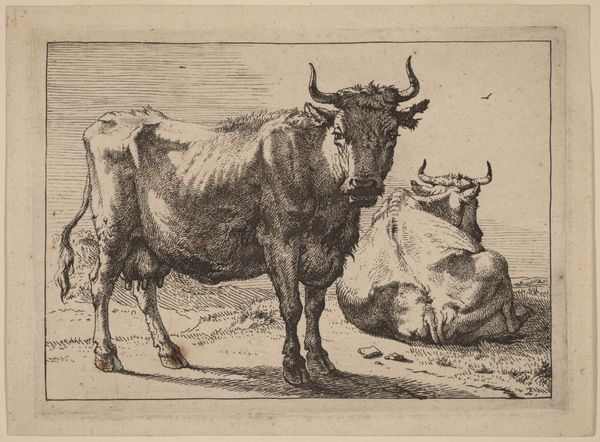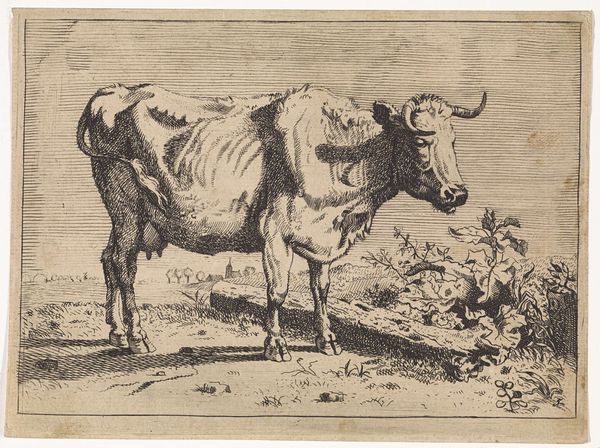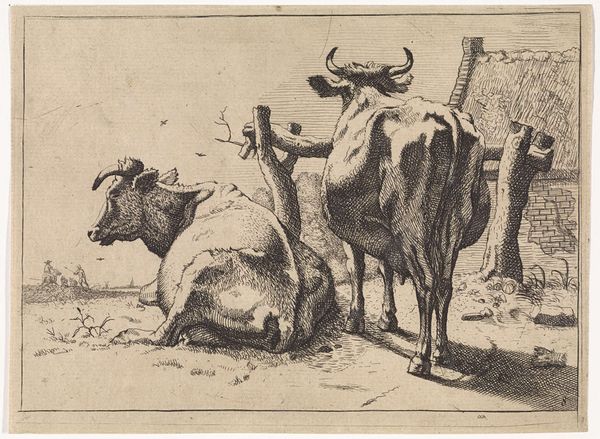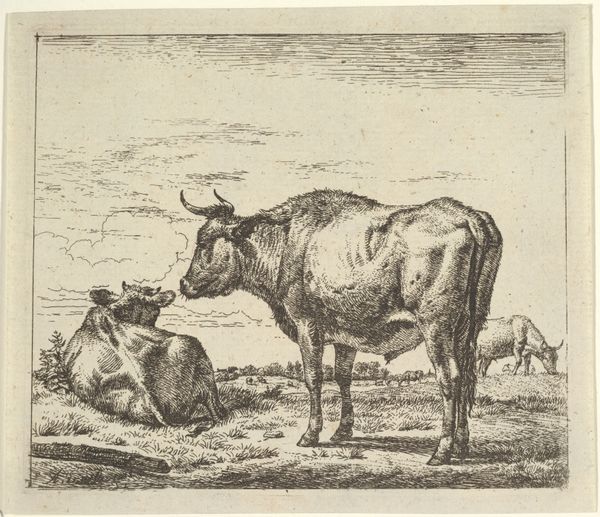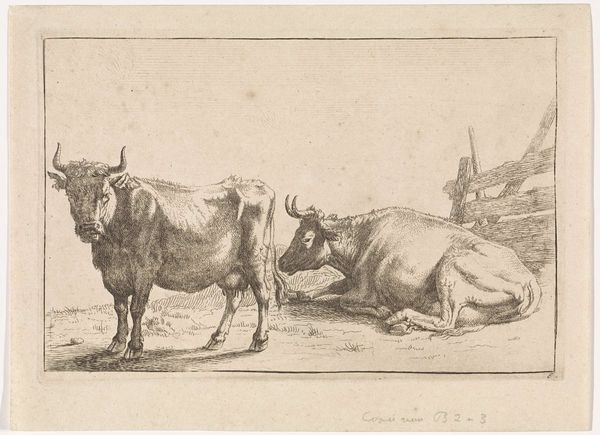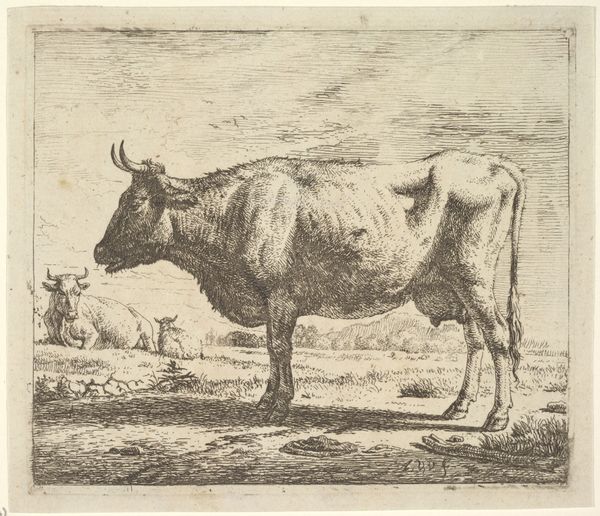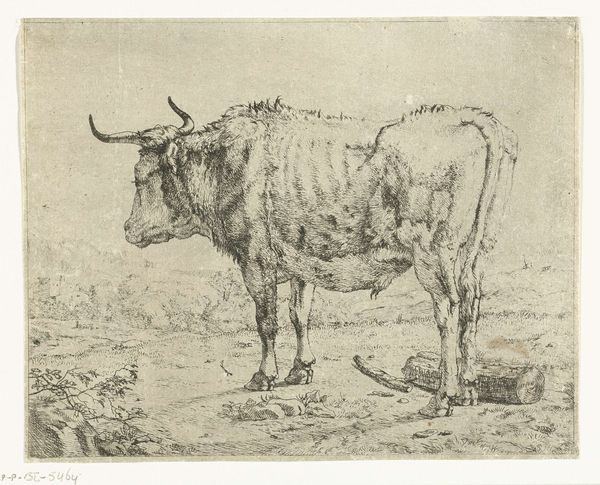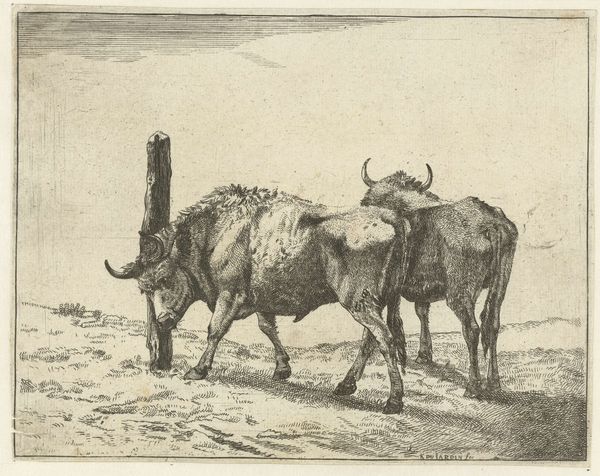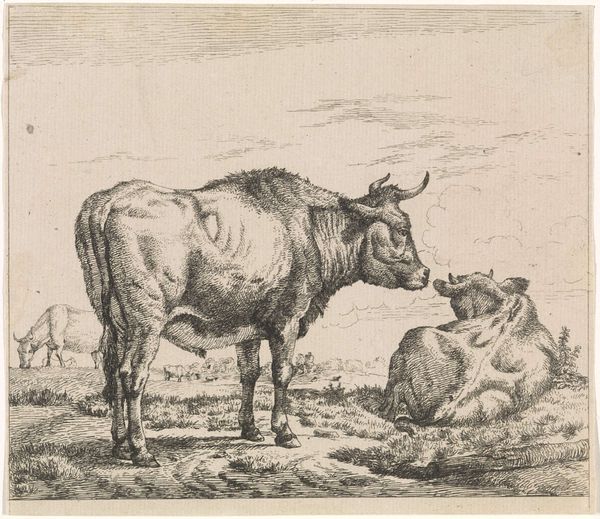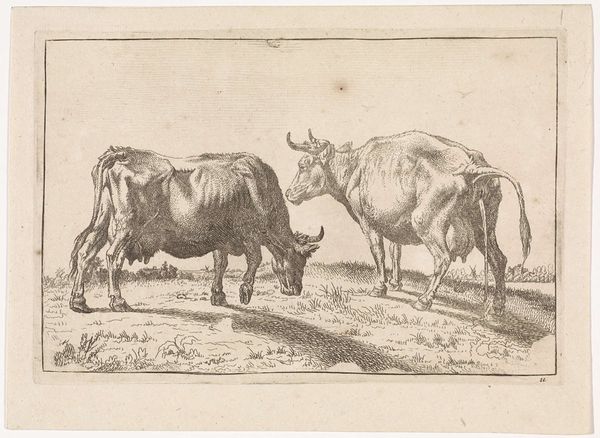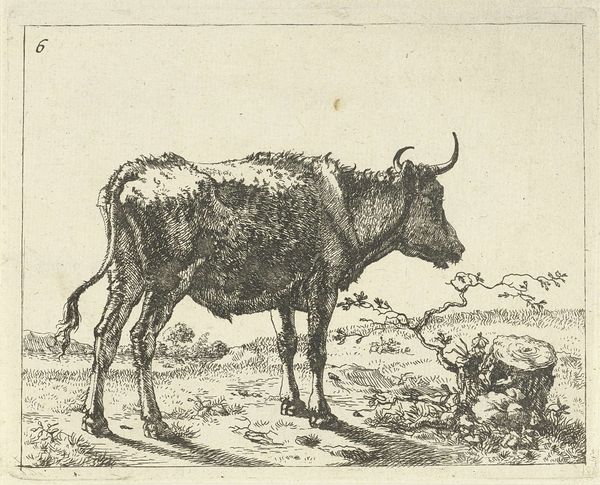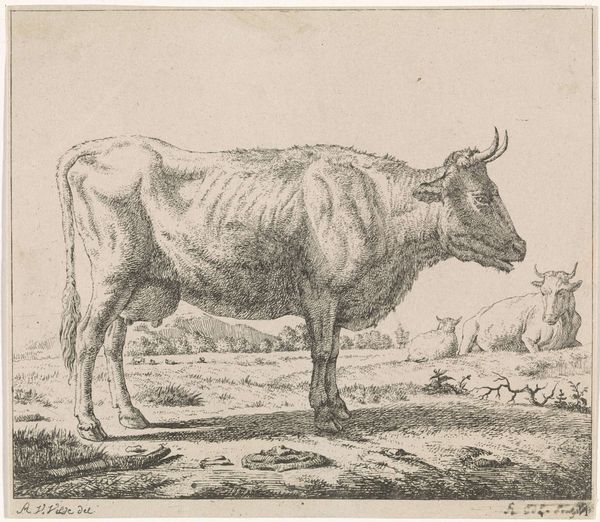
print, etching
#
animal
#
dutch-golden-age
# print
#
etching
#
landscape
#
figuration
#
realism
Dimensions: height 118 mm, width 160 mm
Copyright: Rijks Museum: Open Domain
Curator: Before us is an etching from the Dutch Golden Age, sometime between 1650 and 1700, showing a bucolic scene, fittingly titled, "Een staande en een liggende koe"—A Standing and a Lying Cow. Editor: The composition is quite striking, isn’t it? The contrast of textures, with the fine lines describing the animals against the rougher background. It gives a sense of quiet dignity to these farm animals. There's something rather melancholic, perhaps in their isolation. Curator: The artist, regrettably anonymous, was clearly engaging with a well-established genre in Dutch art. These depictions of animals, particularly livestock, are often interpreted in the context of the period’s booming agricultural economy. We need to consider what place farming occupied within Dutch society, given that during the 17th century Dutch agriculture became specialized for international markets. Editor: Certainly. The cow, in many historical depictions, symbolized wealth, prosperity, and fertility. Yet, considering feminist theory, how might we view this depiction through a gendered lens? Cows are often associated with nurturing, motherhood, a passive provider of sustenance. Curator: Interesting point. Are you suggesting that the artistic focus on these animals is simply the celebration of traditional female roles? In Dutch painting, for example, cattle represent productivity but also territorialization, in a world run by men. I wouldn’t deny the patriarchy inherent in those societies. Editor: Precisely! By looking at this print we can see this piece beyond the idyllic surface, and perhaps confront complex underlying attitudes about the labor force or, quite simply, their commodification in service to a system. This isn’t just an etching of some cows. Curator: Yes, art and politics. It allows us to delve into questions of agrarian economies, Dutch culture, and animal depiction, connecting past and present. The artwork remains profoundly evocative. Editor: Absolutely. It highlights that simple representations contain layers of socio-cultural meaning to unpack and, if only briefly, reflect on.
Comments
No comments
Be the first to comment and join the conversation on the ultimate creative platform.
